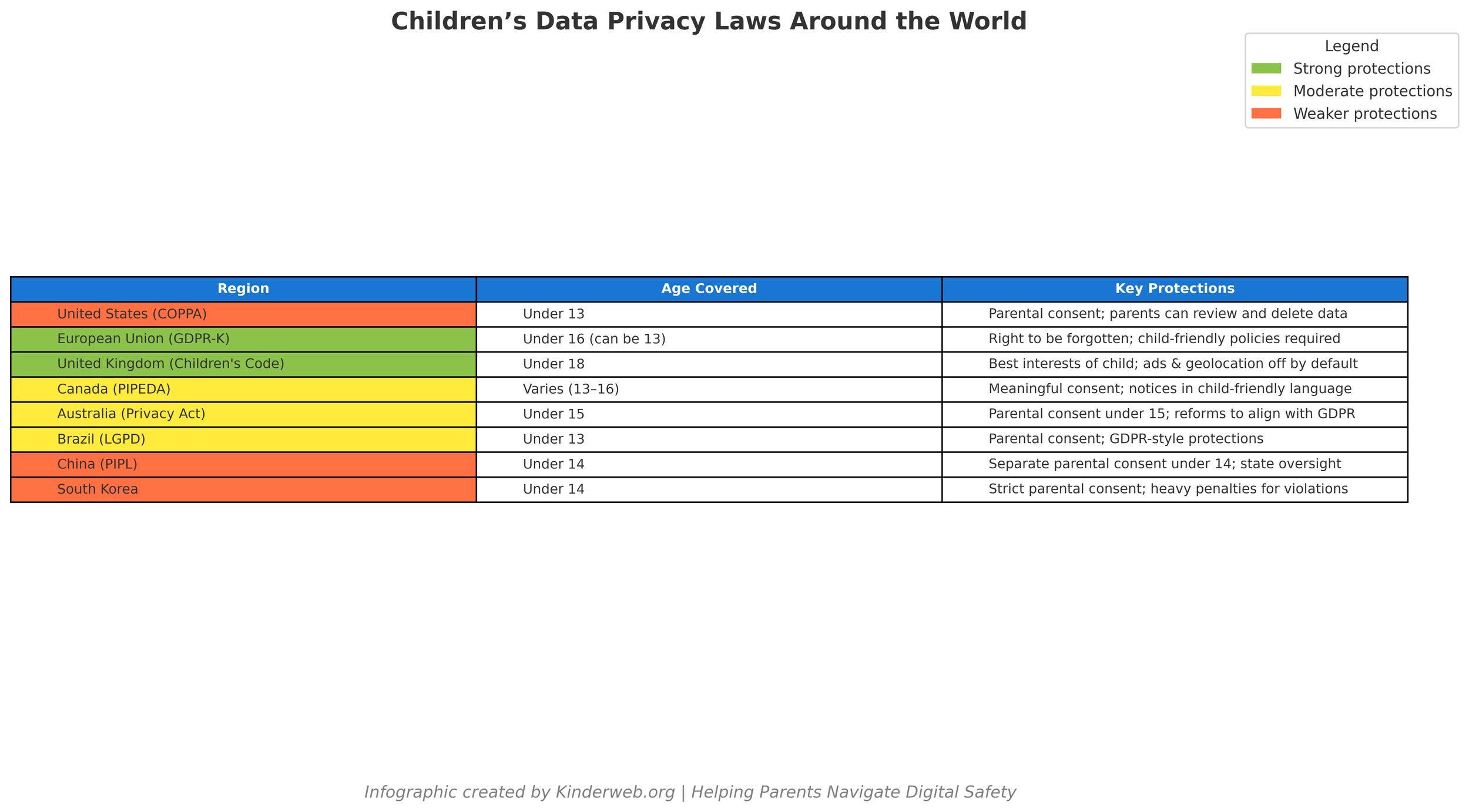Children’s Data Privacy Laws Around the World
Children are spending more time online than ever before, in classrooms, at home, and even in virtual worlds. With this comes growing concern about how their data is collected, stored, and used by tech companies. Around the globe, governments have introduced laws to protect minors’ privacy online. But the details vary from country to country, and parents and educators often find it difficult to navigate the landscape.
This article explores key children’s data privacy laws worldwide, breaking down what they mean and how they impact children’s digital experiences.
Why Children’s Data Privacy Matters
Children are particularly vulnerable to data misuse because they may not fully understand how their information is being collected or why it matters. Personal data can include names, photos, location, browsing habits, and even biometric data from apps and devices. Without strong protections, this information can be exploited for targeted advertising, tracking, or worse.
United States: COPPA
Law: Children’s Online Privacy Protection Act (COPPA)
Age Covered: Under 13
Key Rules: Websites and apps directed at children must get verifiable parental consent before collecting personal information. Parents also have the right to review and delete their child’s data.
Notable Case: YouTube was fined $170 million in 2019 for violating COPPA by collecting data on children without parental consent.
European Union: GDPR-K
Law: General Data Protection Regulation for Kids (GDPR-K)
Age Covered: Under 16 (though some countries lowered this to 13)
Key Rules: Children have the right to have their data erased (“the right to be forgotten”). Online services must clearly explain privacy policies in child-friendly language.
Unique Feature: Stronger emphasis on transparency and child rights.
United Kingdom: Age Appropriate Design Code
Law: Children’s Code (also known as the Age Appropriate Design Code)
Age Covered: Under 18
Key Rules: Services must prioritize the best interests of the child. Features such as geolocation tracking or targeted advertising must be switched off by default.
Impact: Companies like TikTok and Instagram have had to change default settings for younger users to comply.
Canada: PIPEDA and Provincial Laws
Law: Personal Information Protection and Electronic Documents Act (PIPEDA), plus provincial laws
Age Covered: Varies, often under 13–16
Key Rules: Consent must be meaningful, and privacy policies must be written in ways children can understand. Some provinces (like Quebec) have stricter rules.
Australia: Privacy Act and Proposed Online Privacy Bill
Law: Privacy Act 1988; Online Privacy Bill proposed
Age Covered: Under 18 (with stricter requirements under proposed updates)
Key Rules: Consent must be obtained from parents or guardians for children under 15. Proposed reforms aim to align more closely with GDPR standards.
Other Notable Laws
Brazil (LGPD): Mirrors GDPR and requires parental consent for under 13.
China (PIPL): Requires “separate consent” for processing data of minors under 14.
South Korea: One of the strictest frameworks; requires parental consent for children under 14 and imposes heavy penalties for violations.
What Parents and Educators Can Do
Check Privacy Settings: Ensure apps and devices your children use have protections enabled.
Read the Fine Print: Look for whether services comply with COPPA, GDPR-K, or similar regulations.
Exercise Rights: Request access to or deletion of your child’s data when available.
Teach Digital Citizenship: Help children understand why privacy matters and how to protect themselves online.
Children’s data privacy laws vary around the world, but they share one goal: protecting kids in digital spaces. Whether through COPPA in the U.S., GDPR-K in Europe, or the UK’s Age Appropriate Design Code, these regulations are shaping the way companies handle young users’ data. Parents and educators play a crucial role by staying informed, monitoring usage, and teaching children the importance of safeguarding personal information.
Infographic: Children’s Data Privacy Laws Around the World
Here’s a simple infographic summarizing the key laws:

